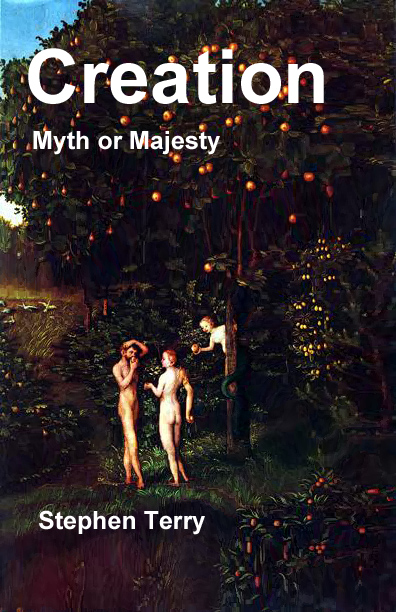
Stephen
Terry, Director

The
Sealed People of God
Commentary
for the February 9, 2019 Sabbath School Lesson
 “‘Do not harm the land or the sea or the trees until we put a
seal on the foreheads of the servants of our God.’ Then I heard the number of
those who were sealed: 144,000 from all the tribes of Israel.” Revelation 7:3-4,
NIV
“‘Do not harm the land or the sea or the trees until we put a
seal on the foreheads of the servants of our God.’ Then I heard the number of
those who were sealed: 144,000 from all the tribes of Israel.” Revelation 7:3-4,
NIV
Perhaps few other passages in scripture have generated
more controversy than the introductory verses of Revelation, chapter 7, which tell
us of the 144,000 who are to be sealed. In the early days of some of the
religious movements that arose in the 19th century, when their
numbers were limited, there was a tendency among the members of those movements
to advance the idea that their membership, endowed with the
end time truth, were those 144,000. The Jehovah’s Witnesses in
particular closely identified denominational membership with membership in that
elite elect. However, as their membership increased to a reported number in
excess of eight million today, a revised interpretation became necessary. Lest
we assume an arrogant posture towards this misguided position, Seventh-day
Adventists also fell into a very similar posture with the “shut door” theology
position we once held. Basing this belief on the Parable of the Ten Virgins in
Matthew, chapter 25,[i]
we believed that the proclamation of the Second Advent of Christ had gone out
and thus the door was shut to those who had failed to respond in a timely
manner. This belief obviated any need for further mission work. Fortunately,
this position was soon abandoned, and buttressed by Ellen White’s visions of a
global work, the church began to send out missionaries like J. N. Andrews for
whom Andrews University in Michigan is named.
As I have pointed out in previous commentaries, a historicist
perspective, once applied to the Seven Churches, of
chapters two and three, and then to the seals of chapter six, for the sake of
consistency, compels the interpreter to view chapter seven as an end time
scenario based on that linear progression. Unfortunately, a desire to ride that
horse to death, even if it is galloping full speed in the wrong direction can
commit us to accepting only one possible narrative for the events and symbols
of Revelation. While some might be willing to die upon that cross, it is not an
interpretation that has no inconsistencies. Of course the common response when
such inconsistencies are mentioned is a strained attempt to reconcile the
discrepancies, and if logical minds balk at acceptance when they see that “house
of cards” taking shape, they are told that they are simply unwilling to accept “the
truth.” That truth, of course, is an accepted sectarian view of what it all
means. Our lesson quarterly this week goes to great lengths to identify as many
characteristics that they possibly can to assist in defining who is in and who
is out of this group. One of the chief points being that they are offered as a
group only manifested at the end of time. All of this effort is expended in
spite of Ellen White’s statement[ii] not to speculate on their
composition, a statement even quoted in the Friday portion of the lesson.
While the historicist view is one possible perspective,
it is also possible that the 144,000 mentioned is simply a metaphor for all of
God’s people who have united with spiritual Israel throughout the ages. If we
can accept the parallel existence of all of the seven churches of chapters two
and three, and the forces represented by the seals of chapter six, then it is
possible to see how the winds of strife being held by the angels represent controlling
the ongoing strife through the ages that has served as a safety net for God’s
people. Interestingly, when groups like this are mentioned throughout Revelation
their identities are confirmed with a strongly male characterization. While
women and children tended to be viewed as chattel in those ancient cultures, it
begs the question, “Was it assumed that if the males in the family were saved
did that automatically save the females as well?” Such perspectives are a bit
grating to our modern sensibilities, even though some extremists wish to re-establish
such gender biases today in order to prohibit women in ministry because the
scriptures were written in a time when that was the cultural norm.
But what of the 144,000? Could this simply be a metaphor for those who returned
from the Babylonian captivity? Isaiah, chapter ten, refers to that returning remnant.[iii] When we reach chapter
fourteen of Revelation, we see that the call to return from Babylonian
captivity is very much a basis for what John has to tell us in this book. The Jews,
who returned from Babylon in the sixth century B.C.E., were intended to become
a light to the nations, and all peoples were to be drawn to Jerusalem to
worship God. This may be represented in metaphor by the vast multitude
mentioned in the latter part of chapter seven. Our lesson quarterly makes a lot
of effort to use their description to attempt to identify a historic group who
share a common literal identity. However, we might simply see the description
as primarily identifying those who are faithful to God without regard to what
those specifics actually are. Typically, when we have drawn such specific
lines, it has often been for the purpose of being able to say, “I am in, and
you are out. Sorry about that.” We love to feel secure in our salvation, and we
also love to feel it is because of something good we have done, so if we can
create a checklist, wouldn’t it be great to look at those points from time to
time to see how wonderfully we are progressing? Like John Bunyan’s “Pilgrim’s
Progress,” we like to keep our eyes on the signposts to see how much farther it
is to the Celestial City. Unfortunately, we rarely give a thought to whether or
not, once we arrived, we could obtain entrance.
We forget that there is an ongoing process related to
that vast gathering in chapter seven. Like the Parable of the Ten Virgins, that
process is also found in Matthew, chapter 25, in the Parable of the Sheep and
the Goats.[iv] While our lesson
quarterly makes much of things like avoiding pollution with apostate churches
and other similar attributes, that parable appears to indicate it is kindness
and compassion that are the keys to entry into the kingdom of heaven. While we
may avoid those apostate churches or even lay down our lives for our faith, if
we have not learned how to love one another and extend kindness and compassion
to one another, it all may be for naught. Does this mean that what I do will
grant me entrance? No, it is determined by the state of our heart toward
others. It is possible to give to the poor while not caring one whit for them. We
must ask ourselves, "Are we doing it to get into heaven, or are we doing
it out of love for them?" Perhaps the best way to determine this is
whether or not we would continue to care for them even if we do not think they
are worthy of our love and compassion? We too often like to separate the lost
into those who deserve our efforts and those who don’t. But if we are honest
and ask who deserved the loving sacrifice upon the cross that Jesus gave, we
have to admit that no one deserved the precious gift he offered.
Why is this important to understand? It is important because
we can come to realize that measuring ourselves by what we believe the 144,000
or the vast multitude to be may be inappropriate. They are not our standard.
Christ is, and there is little doubt that he demonstrated compassion and grace
to many who could not claim they deserved the blessings of healing he gave
them. The many healings he performed were a lesson to us that we, too, can come
to him, even though we do not deserve to. We can come, not because of who we
are or what right we feel we may have earned to do so. No, we come to him
because of who he is. He loves us. His love is consistent and enduring, and
that love pursues us continually. A faithful father or mother may love their
child no matter what that child may become, but even that love pales in
comparison. It is Christ’s love that draws the 144,000. It is that love that
the vast multitude is also drawn to. That love persists no matter what the winds
of strife stir up. That love forgives and does not resurrect the sins of the
past. Our condemnation has been nailed to the cross, and in that forgiveness,
we can stand sparkling clean in the presence of our Savior. And in receiving that
forgiveness and love, we are able to reflect the love of Christ to others that
they might come as well. That is how the multitude comes to be.
